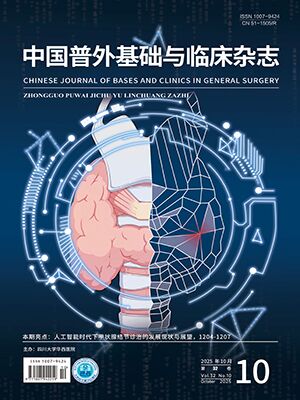Objective To understand the current progress in the application of artificial intelligence (AI) technology in intrahepatic cholangiocarcinoma (ICC). Method A systematic review was conducted on recent domestic and international research literature regarding AI applications in ICC, with a focus on radiomics and deep learning (DL). Results ICC is a critical subtype of primary liver cancer characterized by high malignancy and mortality. We systematically reviewed the current status and prospects of AI-based approaches in preoperative diagnosis, treatment guidance, and prognosis prediction for ICC. Conclusions Despite the progress made by AI in the field of ICC, it still faces challenges such as model accuracy, data integration, and clinical application. With technological advancements and deeper research, AI is expected to play a more significant role in ICC prevention and treatment. Interdisciplinary collaboration will also drive sustainable progress in this domain.
Citation:
SHI Changzhe, DONG Xiaoge, DU Kaihao, WANG Zhanjin, HOU Lizhao, WANG Zhan. Research progress of artificial intelligence technology in intrahepatic cholangiocarcinoma. CHINESE JOURNAL OF BASES AND CLINICS IN GENERAL SURGERY, 2025, 32(5): 646-653. doi: 10.7507/1007-9424.202501108
Copy
Copyright © the editorial department of CHINESE JOURNAL OF BASES AND CLINICS IN GENERAL SURGERY of West China Medical Publisher. All rights reserved
| 1. |
Massarweh NN, El-Serag HB. Epidemiology of hepatocellular carcinoma and intrahepatic cholangiocarcinoma. Cancer Control, 2017, 24(3): 1073274817729245.
|
| 2. |
|
| 3. |
|
| 4. |
Mu R, Zeng X. A review of deep learning research. 2019, 13: 1738-1764.
|
| 5. |
|
| 6. |
|
| 7. |
|
| 8. |
|
| 9. |
|
| 10. |
Lee HS, Kim MJ, An C. How to utilize LR-M features of the LI-RADS to improve the diagnosis of combined hepatocellular-cholangiocarcinoma on gadoxetate-enhanced MRI? Eur Radiol, 2019, 29(5): 2408-2416.
|
| 11. |
|
| 12. |
|
| 13. |
|
| 14. |
|
| 15. |
|
| 16. |
|
| 17. |
|
| 18. |
|
| 19. |
|
| 20. |
|
| 21. |
|
| 22. |
|
| 23. |
|
| 24. |
|
| 25. |
|
| 26. |
Xu H, Zou X, Zhao Y, et al. Differentiation of intrahepatic cholangiocarcinoma and hepatic lymphoma based on radiomics and machine learning in contrast-enhanced computer tomography. Technol Cancer Res Treat, 2021, 20: 15330338211039125.
|
| 27. |
|
| 28. |
|
| 29. |
|
| 30. |
|
| 31. |
|
| 32. |
|
| 33. |
|
| 34. |
|
| 35. |
|
| 36. |
|
| 37. |
|
| 38. |
|
| 39. |
|
| 40. |
|
| 41. |
|
| 42. |
|
| 43. |
|
- 1. Massarweh NN, El-Serag HB. Epidemiology of hepatocellular carcinoma and intrahepatic cholangiocarcinoma. Cancer Control, 2017, 24(3): 1073274817729245.
- 2.
- 3.
- 4. Mu R, Zeng X. A review of deep learning research. 2019, 13: 1738-1764.
- 5.
- 6.
- 7.
- 8.
- 9.
- 10. Lee HS, Kim MJ, An C. How to utilize LR-M features of the LI-RADS to improve the diagnosis of combined hepatocellular-cholangiocarcinoma on gadoxetate-enhanced MRI? Eur Radiol, 2019, 29(5): 2408-2416.
- 11.
- 12.
- 13.
- 14.
- 15.
- 16.
- 17.
- 18.
- 19.
- 20.
- 21.
- 22.
- 23.
- 24.
- 25.
- 26. Xu H, Zou X, Zhao Y, et al. Differentiation of intrahepatic cholangiocarcinoma and hepatic lymphoma based on radiomics and machine learning in contrast-enhanced computer tomography. Technol Cancer Res Treat, 2021, 20: 15330338211039125.
- 27.
- 28.
- 29.
- 30.
- 31.
- 32.
- 33.
- 34.
- 35.
- 36.
- 37.
- 38.
- 39.
- 40.
- 41.
- 42.
- 43.




